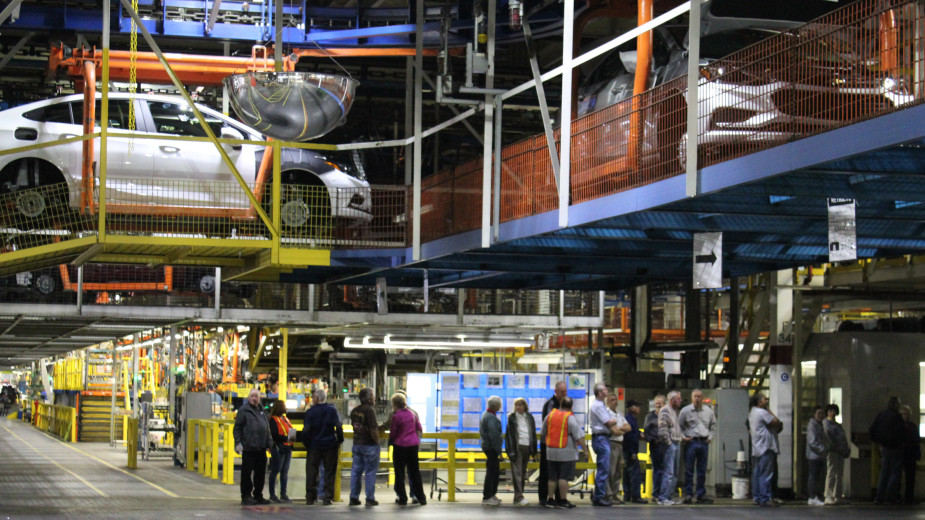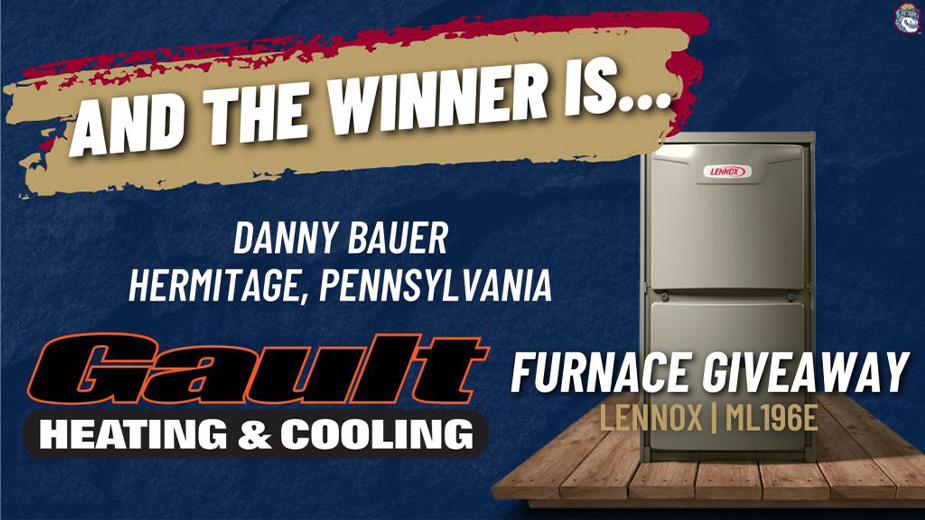Follow the Cruze Along Lordstown’s Assembly Line
LORDSTOWN, Ohio – To the thousands of drivers that pass by on the Ohio Turnpike every day, there aren’t many signs of the work being done inside the General Motors Lordstown Assembly plant. There are no stacks puffing out steam, no massive pieces of equipment moving around and certainly no hints of the miles of assembly line inside the plant.
The only sign of the work to those passing by is the glint off of hundreds of windshields as newly manufactured Chevrolet Cruzes waiting to be shipped to dealerships across the nation.
And not many outside of the plant’s 4,500 employees get to see just what goes on inside the 6.2-million-square-foot plant. But to celebrate the Lordstown Assembly’s golden anniversary, the plant today opened its doors to auto enthusiasts for tours of the plant, offering a glimpse into how the car is built.
Here’s what visitors saw and learned:
Building the Cruze is a day-long process spanning all three parts of the plant. The first pieces of the car are stamped from sheet metal at the metal center just northeast of the main assembly building. Once the formed pieces are welded together to make the shell of the car, the body is sent to the paint shop where it’s given one of eight colors before being sent to the assembly building via elevator. Built in 1966, the assembly building is the oldest structure at the plant. Four years after the assembly building opened, the metal center went into operation and in 2004, a paint shop was added to the production cycle.
It’s in the assembly plant that the car goes from a mass of metal to the street-ready car on dealership lots. The first stop is the trim shop, which is divided into four legs.
First the doors are removed from the car to prevent any damage while workers and robots build the interior of the car. Next, the dashboard, consoles and seats are installed before heading to the third leg where the car’s battery is installed, along with retainers to hold all the newly installed parts in place. When everything’s secured, the doors are reinstalled.
While the assembly line process has certainly changed since the plant was built, some of the most visible alterations are in the trim shop. Robots assist line workers in installing larger parts of the car such as the seats or windshields, while bright orange skillets – a metal cradle that carries the car along from station to station – can be adjusted for each worker. Throughout the process, until the Cruze is finished and ready to be taken out of the assembly building, the car body remains on the skillet.
“One of the biggest benefits of the skillets is that they’re ergonomically friendly,” said Michelle Lambert, the Cruze launch manager. “They raise and lower for the operator at each leg of the trim shop.”
Like the rest of the shop, all parts are sent to workers presorted in black crates with an attached shipping manifest, telling them exactly what the parts are and what needs to be done with them.
Once the doors are back on the Cruze, it heads to the second stage of assembly on an overhead conveyor system to the chassis area. The first components added in this stage are the engines – built in Flint, Mich. – and transmissions. Automatic transmissions are built in Toledo and manual transmissions are constructed in Vienna, Austria.
Before being installed, the connectors for the two systems are hooked up and, through an overhead line that loops around the area, are double-checked before being sent into an overhead bank. Automation also comes into play when it’s time to load the engines and transmissions into the cars. After waiting in the storage space, the powertrain is loaded into an automated guided vehicle, or AGV, which drives the unit to the next stage of assembly without human interaction.
“The AGV is really where the entire chassis system is married for the first time,” said business manager Chris Ensign. “And as we go through the system, we button up some stuff with the muffler and exhaust sensors.”
After the underbody is completed, the tires and wheels area is added, Ensign said.
“Right now, here at Lordstown, there are five different tires with four rims. The combination is based on the different trim packages.”
Currently only one engine, a 1.4-liter turbo, is available for the Cruze, but a diesel model will soon be added to the assembly line.
“We just built some offline and next month we’ll start doing some on the line,” Ensign said.
“The production engine will be built in Germany. It won’t be a Volkswagen, but it will be built in Germany,” he said, referring to the emissions report fraud scandal that rocked the automaker last year.
Once the powertrain and underbody is completed, it heads to its final stops, all involving testing and quality control. After the car has been filled with the proper fluids – oil, power steering fluid, and a small amount of gasoline among them – it’s given a New Generation Flash Test.
“That means we go through and check every car to make sure every electrical connection is made and that all modules are the right ones for the specific vehicles,” said Steve Sullivan, one of the plant’s general assembly planners.
As cars roll by on the line, the lights on the car, both inside and out, are switched on and back off again to ensure all the connections were made properly. After the electronics test, the car is “toed in” to make sure the tires are properly aligned and headlights are examined to make sure they’re at the proper angle and height.
Before the car hits the massive parking lot outside the plant, there’s one final test for every Cruze that comes off the assembly line, Sullivan said, done in an automated booth.
“It’s a secondary check that’s the same as what we do with [the fluid fill and electronics check] before we ship it,” he said. “After 23 hours of building, by the time it gets here to us, this car is completed.”
In the parking lot surrounding the Lordstown Assembly, the finished cars are parked and given one last once-over to make sure that everything’s where it needs to be and that the car is labeled properly for shipping.
While work done in the metal center, paint shop and assembly buildings is what’s most visible to end users, other parts of the plant also play a role in keeping the process moving smoothly.
“There are hundreds of different jobs here from start to finish. It gets built with a solid core group of people, which we have here at Lordstown,” said Dave Benner, a 33-year employee who now works as a representative for the plant’s Work Family Program.. “[This job] helps people with personal problems in their lives and it really is close to my heart.”
The plant has undergone many changes since Benner began working there, he said, but few are as welcome to worker as the improvements in employee comfort and ergonomics.
“Back in the day, there was no such thing as ergonomics. You’d always be bending way into a car or dealing with potential trip hazards,” he said. “Years ago, it was completely hands-on and now there are robots that do a lot of jobs. All of it is help for the employees.”
Copyright 2024 The Business Journal, Youngstown, Ohio.



